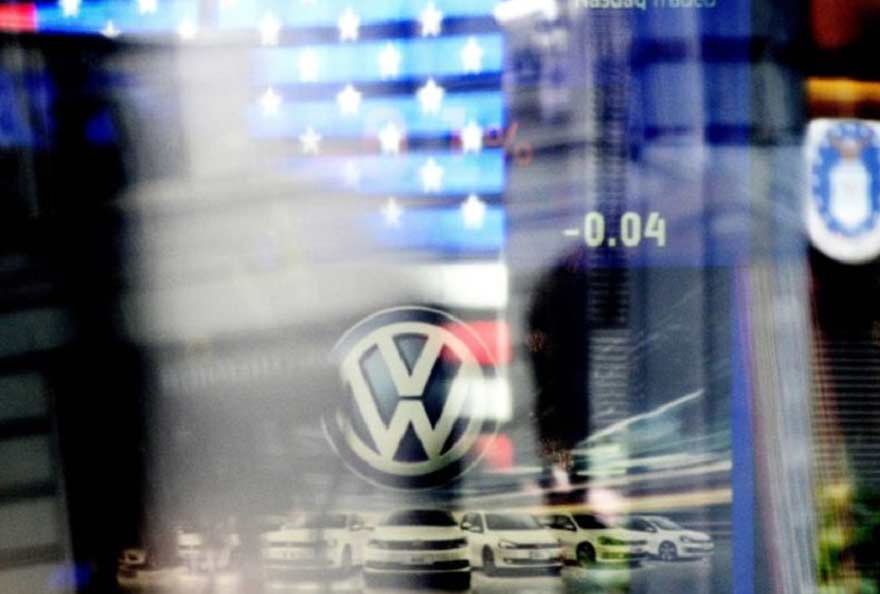We are beginning to understand it more and more: the algorithms are invading whole swathes of our daily lives. The scandal that is stirring up the automobile industry through the Volkswagen affair is one of the symptoms of this invasion of black boxes into our environment. The VW affair sheds a crude light on the mutations to which one of the most widespread industrial objects - the automobile - is subject.
Sdo you know that a modern car is driven by a set of software and applications representing several hundred thousand lines of code. By way of comparison, a mid-range sedan has a volume of computer code lines representing half of the lines of code found on aircraft such as the Boeing 787, or about 10 million lines. According to Jacques Aschenbroich, Valeo's CEO, who was interviewed by the French carmaker, the next models of autonomous cars were due to be launched in the near future. le Figaro...owning over 300 million of them. As a reminder, your state-of-the-art Android smartphone contains a maximum of 12 million. So the car has become a rolling mega-computer.
Tamper-proof black boxes
In fact, nowadays, there's no point in trying to repair your car yourself and get your hands in the engine. The predominance of electronics under the bonnet means that you have to go through the brand's approved repairers, who have become more electronic engineers than mechanics. Worse still, if you try to do it with a 12 mm key, you risk being condemned for copyright and intellectual property infringement of the codes! This is what happened recently in the United States according to the magazine's revelations. Wired. The penetration of algorithms into the engines of our expensive cars is accompanied by colossal commercial, strategic and financial stakes. Their common denominator: making the consumer increasingly dependent on the brand.
Well, it's the ransom of progress, one might say. We want cars that are more efficient, more economical, safer; all these constraints go hand in hand with an ever-increasing sophistication of technology. This is a commonplace phenomenon that is characteristic of today's world. Nevertheless, there is a problem. It is that it is impossible to know the content of these algorithms. It is impossible to know what's going on in the black boxes in my car. And yet, they control almost everything. Indeed, there is not a modern car that is not driven by software that measures and analyzes in real time and even several thousand times a second thousands of parameters (engine temperature, exhaust gas temperature, car weight...) in order to adapt the behaviour of the engine. The journalist of the WorldMartin Untersinger, explains that " it is this computer which, in a few milliseconds, for example, orders the engine to slightly increase its power to counterbalance the starting of the air conditioning, which is energy-intensive. ".
By controlling everything, these black boxes become particularly sensitive to risks, especially those that could be in the field of cybercrime. We are not in the realm of intellectual speculation or science fiction, as the manufacturer Fiat-Chrysler paid the price last July. Victim of a attack (as a test) of hackers who had taken outright control of one of its models, the Jeep Cherokee, the manufacturer had to repatriate 1.4 million vehicles to repair the flaws in their security.
These black boxes that arouse curiosity have shown with the VW case an even darker side: a criminal or even criminal aspect. After all, they can also be used to deceive us. So what happened with Volkswagen, the flagship of German industry?
Neither seen nor known
In order to market a vehicle, the manufacturer must undergo a battery of tests intended in particular to measure the levels of emissions of particulate matter and gaseous pollutants. This is the law. If the level of pollution is not in conformity, the model cannot be marketed. What has VW done? The engineers simply slipped a few more lines of code into the famous black box. Impossible to spot them, drowned in an avalanche of computer formulas. Their function? Automatically spot a test situation to start an engine operation that reduces polluting emissions and obtain its patent. When the test situation is not present, the engine starts to operate normally and pollute again. How does the algorithm distinguish a test situation? Not difficult. Indeed, the imposed standards set very precisely the test situations: position of the violator, vehicle speed, engine operating time and atmospheric pressure. When these test conditions were detected, the algorithm instructed the vehicle to behave like a good student. Neither seen nor known.
The case occurred in the USA where the certification body, the EPA, had not seen anything go wrong. It took an NGO specializing in clean transportation, International Council for Clean Transportation (ICCT), sticks his nose in the exhaust fumes so that it's uncovered. The actual emissions of the VW vehicles tested were 15 to 35 times higher than the standards! A scam that could not leave indifferent the NGO which is financed by another very powerful organization in the United States, the ClimateWorks Foundation which works with regional and national governments to promote public policies for clean transportation; in the United States and Europe, but also in China, India and Latin America. The VW case was necessarily becoming global.


What's wrong with Volkswagen?
Why did VW indulge in this cheating? Observers from all over the world are amazed, politicians condemn, the company's share price collapses, the mythical boss Martin WinterkornThe brand's customers are disappointed and speak of a breach of trust. So what happened? Why did VW find it necessary to have the emission control system deactivated when the car was driving normally and then put it back on in a test situation? According to a CNRS researcher interviewed by the site Industry and Techno, " One hypothesis could be that it's because the anti-pollution system increases the car's consumption ». Another expert in catalysis and spectrochemistry completes the argument: " This is a big problem with modern diesel and petrol vehicles. In order to remove nitrogen oxides, it is necessary to return hydrocarbons and thus increase consumption by several percent, or in other words, reduce engine efficiency..» In other words, to reduce the polluting gases, mainly nitrogen oxides, you have to inject more hydrocarbon. This increases fuel consumption and reduces engine efficiency. So, paradoxically, by wanting to reduce polluting emissions, you increase hydrocarbon consumption.
This may be a reason, not exculpatory, but explanatory.
There is another one, this time concerning financial profitability. Environmental standards are, again according to experts, at the limit of available technologies. This means that pollution regulations are becoming more and more drastic and sometimes precede technological implementations. The researcher specialising in depollution cited by I&T adds: ". While industrial emission standards reflect the state of the art in technology, they do not have time to become established in the automotive sector. For example, the next automotive emissions standard, Euro7, is planned for the end of 2017 or 2018, but no technology is yet available for this. ".
The standards therefore impose on manufacturers a race for technical improvement and compliance. A race that is very expensive and can lead to a few lapses in driving. As far as the VW affair is concerned, the calculation is not necessarily a good one because this cheating is likely to cost at least $18 billion in fines ordered by the American courts, not to mention the incalculable cost of the damage to its image and reputation.
A warning
This crisis sounds like a warning to car manufacturers to move towards clean vehicles. Will this warning also apply to imposing greater transparency in access to the codes that control our cars without our knowledge, and which today are completely opaque?












